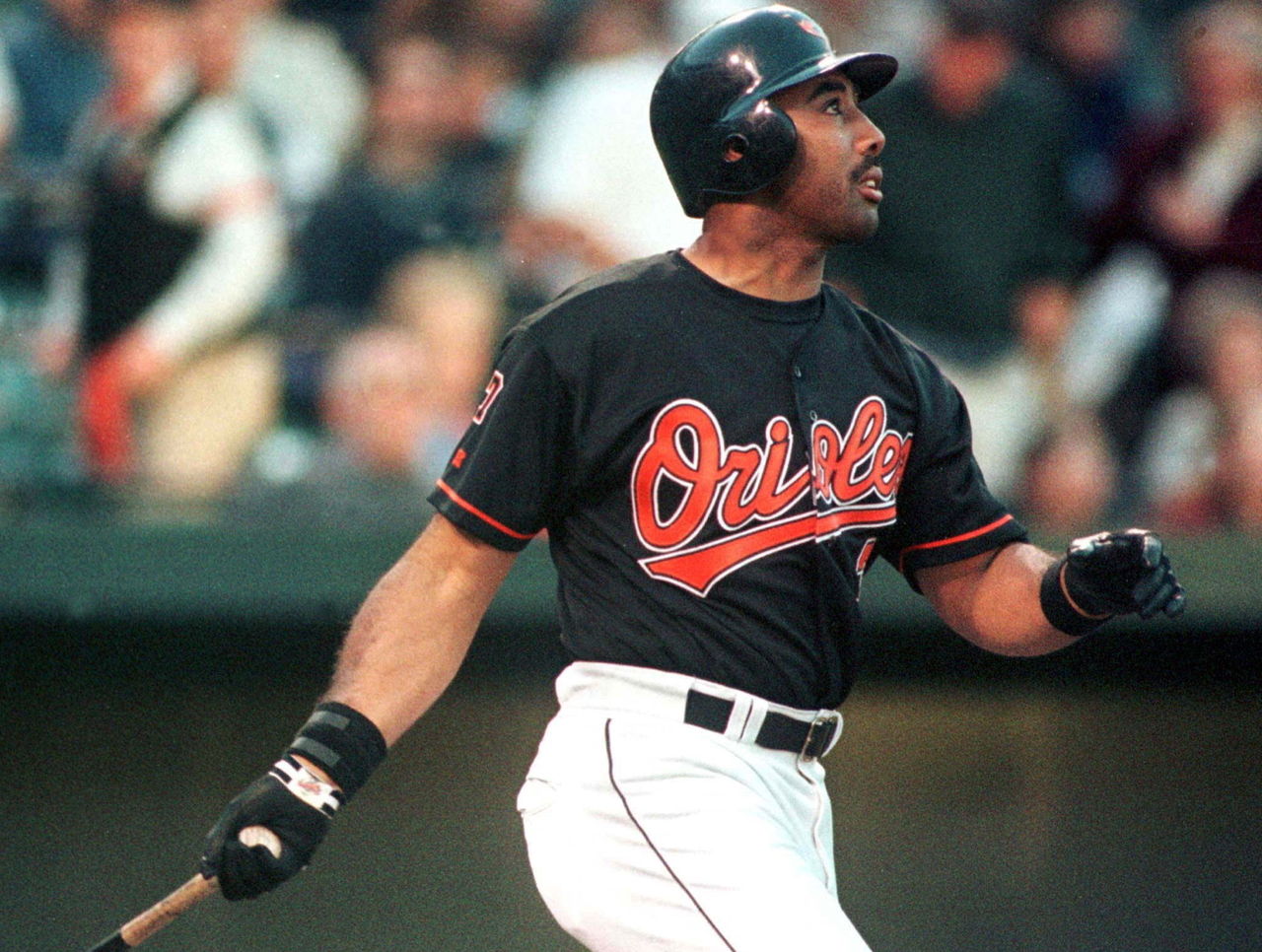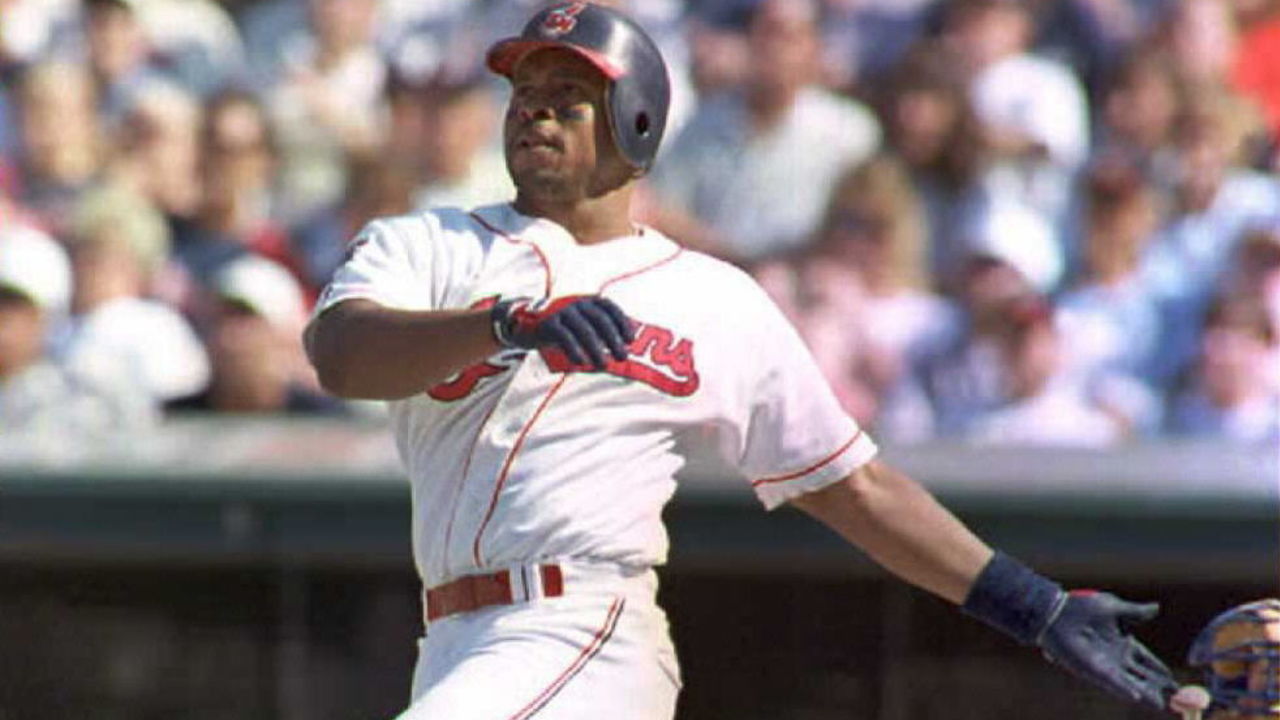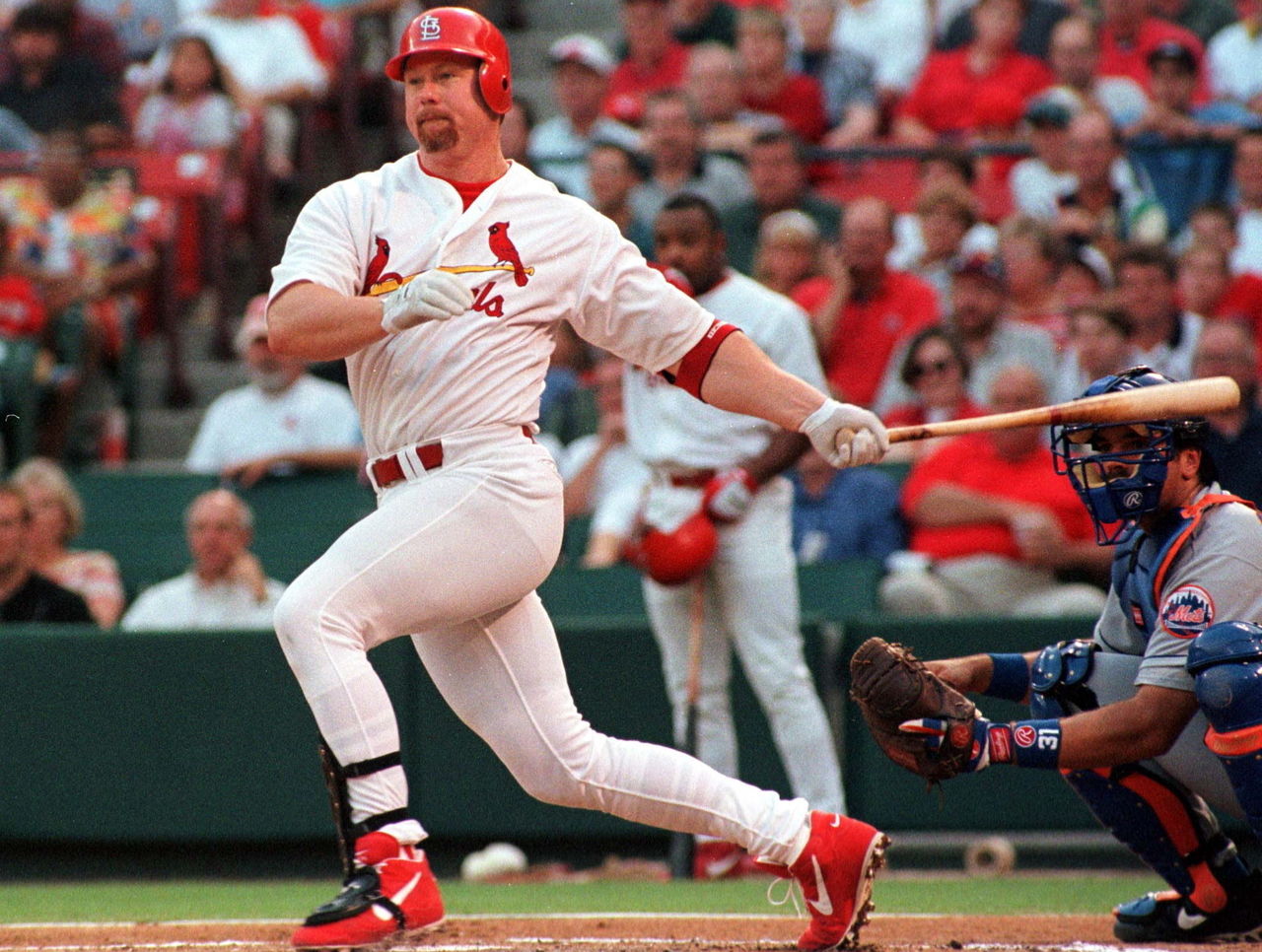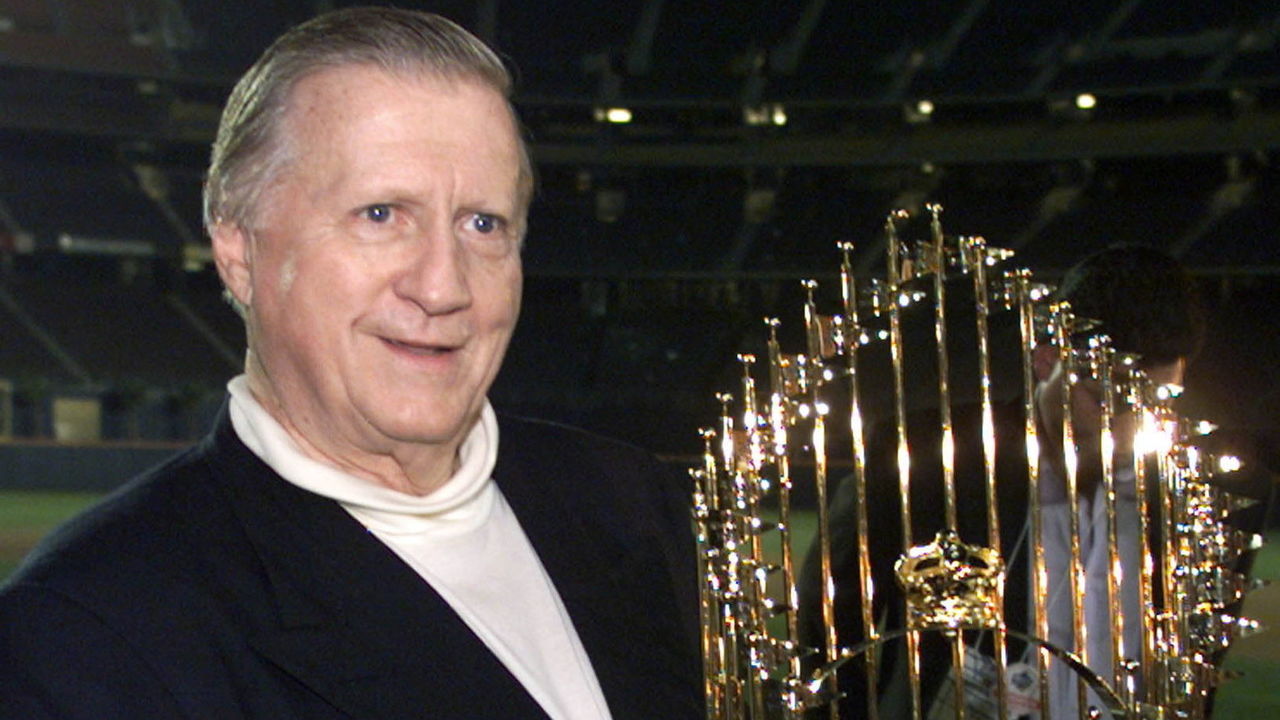Reviewing the 2017 Hall of Fame 'Today's Game' ballot
On Sunday, the Baseball Hall of Fame's Eras Committee - formerly the Veterans Committee - will announce the results of its 2017 ballot. Ten men - five players, two managers, three executives - from the era christened "Today's Game" that spans from 1988 to the present are on this ballot, and all of them merit consideration. Here's a rundown of the 10 worthy candidates and their likelihood of induction.
Harold Baines

Position: DH-OF
Teams: White Sox, Orioles, Athletics, Rangers, Indians
Years: 1980-2001
Why he's in: A six-time All-Star and former first overall pick, Baines was a model of consistency for 22 years, collecting over 2,800 hits, and hitting over 20 homers in 11 different seasons. He retired as the all-time leader in both home runs and hits by a designated hitter, and was twice named DH of the Year.
Why he's out: The metrics are not kind to Baines, and suggest his impressive counting numbers and traditional stats owe more to longevity than anything else. By Jay Jaffe's JAWS metric, Baines ranks 70th among right fielders (his primary position in the field before moving to DH) with 29.9, between solid but unspectacular players Carl Furillo and Ken Griffey Sr. Wins Above Replacement isn't much kinder; among players with at least 50 percent of games as a DH, Baines compiled 38.5 bWAR, well behind Frank Thomas, Edgar Martinez, and David Ortiz, but comparing favorably to several "Hall of Very Good" types in Don Baylor and Hal McRae.
Did you know: The White Sox retired Baines' No. 3 after trading him to Texas in July 1989, making him one of the few players to receive the honor while still active.
Albert Belle

Position: OF-DH
Teams: Indians, White Sox, Orioles
Years: 1989-2000
Why he's in: From 1991-96, his first five full seasons anchoring the star-studded Indians lineup, Belle led baseball with 234 homers. He posted an OPS over 1.000 four times in 10 full seasons, and won five Silver Sluggers. In 1995 he put together the first and only 50-homer, 50-double season in baseball history. Though a chronic hip injury cut his career short, he still compiled 39.9 bWAR over 12 seasons.
Why he's out: As good as he was on the field, Belle's off-field issues - including anger problems, arrests, battles with the media, and that whole corked bat incident - clouded his excellent career. It didn't win him any friends in his two years on the BBWAA ballot, and that baggage could very well hurt him in this vote. His awful defense also dragged down some of his metrics, hurting his case.
Did you know: Belle's contract with the White Sox allowed him to opt out if he was dethroned as the highest-paid player in baseball. He exercised that clause two years in.
Will Clark

Position: 1B
Teams: Giants, Rangers, Orioles, Cardinals
Years: 1986-2000
Why he's in: Consistency. Hitting into the wind of Candlestick Park for much of his career, Clark still averaged 22 homers during his Giants years and remained a stable lineup presence in Texas, Baltimore, and St. Louis. Though his overall counting numbers - 2,176 hits, 224 homers - are well below the Hall of Fame standards in the eyes of many observers, the metrics are kinder: his JAWS score of 46 is better than that of Hall of Fame first basemen Tony Perez and Orlando Cepeda. He was named the 1989 NLCS MVP and made six All-Star teams, won a pair of Silver Sluggers, and a Gold Glove.
Why he's out: The low counting numbers won't do him any favors, and his shortened career - he retired at age 36 after posting a .964 OPS and hitting 21 homers - prevented better overall totals. In addition, his JAWS score is beaten by several very good first basemen who aren't in Cooperstown, including Keith Hernandez and John Olerud. Clark was an excellent first baseman, but ultimately finished in the group of several very good-but-not-great types at his position.
Did you know: Clark hit a home run on his first minor-league swing, then homered on his first big-league swing with the Giants.
Orel Hershiser

Position: P
Teams: Dodgers, Indians, Giants, Mets
Years: 1983-2000
Why he's in: Hershiser was durable, throwing over 200 innings nine times - including leading the NL in innings pitched from 1987-89 - and winning double-digit games in 13 different seasons. His best year came in 1988, when he set a major-league record with 59 consecutive shutout innings en route to the NL Cy Young Award and a World Series ring. A three-time All-Star, he also took home the 1988 NLCS and World Series MVP, as well as the 1995 ALCS MVP.
Why he's out: Shoulder surgery in 1990 derailed his career, and though he hung on for a decade, Hershiser was at best a league-average pitcher from that point on, never again posting an ERA below 3.40. Hershiser's career ERA+ of 112 would be among the worst in Cooperstown if elected; his ERA+ of 100 over the final decade of his career is lower than Hall of Famer Rube Marquard's career ERA+ of 103, which is the lowest among the Hall's 64 pitchers.
Did you know: Hershiser is the only player to be named MVP of a League Championship Series in both the AL and NL.
Davey Johnson

Position: Manager
Teams: Mets, Reds, Orioles, Dodgers, Nationals
Years: 1984-2013
Why he's in: His teams won. Johnson is most famous for managing the 1986 Mets to a World Series title - the Mets averaged 95 wins in his six full seasons with the club - but he also turned moribund franchises in the Reds, Orioles, and Nationals into playoff teams. Not counting partial seasons, the two-time Manager of the Year only posted one losing record, with the Dodgers in 1999. His career .562 winning percentage is higher than several Hall of Fame skippers, including Walter Alston and Sparky Anderson.
Why he's out: Johnson's shorter career in the dugout prevented him from adding to his win totals - he ranks 31st all time - and the 1986 Mets were the only one of his teams to reach the fall classic. An 11-year gap between jobs might leave some committee members scratching their heads, too.
Did you know: Johnson's 43 homers with the Braves in 1973 remains the MLB single-season record for second basemen.
Mark McGwire

Position: 1B
Teams: Athletics, Cardinals
Years: 1986-2001
Why he's in: Big Mac's numbers speak for themselves. He ranks 11th all time with 583 home runs, and is still in the top 10 of both slugging percentage and OPS. McGwire hit over 30 homers 11 times and surpassed the 50-homer mark four times, led baseball in that category five times, and twice drove in over 140 runs. His 70-home run season in 1998 and the year-long battle for the single-season record with Sammy Sosa made him a baseball icon; many believe that chase helped revive interest in the sport coming out of the 1994 strike.
Why he's out: No matter what your views are on the issue, performance-enhancing drugs have clouded McGwire's accomplishments. In 2010, McGwire admitted to using steroids during his career, though no testing existed at the time. The admission - and the near-decade of suspicion preceding it - ensured he never came close to induction on the BBWAA ballot. He's hoping the Hall of Famers on the Eras Committee might feel differently.
Did you know: The hulking McGwire began his big-league career as a third baseman, playing 24 games at the hot corner before moving to first permanently in 1987.
Lou Piniella

Position: Manager
Teams: Yankees, Reds, Mariners, Devil Rays, Cubs
Years: 1986-2010
Why he's in: Known as much for his fiery and entertaining arguments as for his managerial skills, Piniella's 1,835 wins rank 14th all time and trails only Gene Mauch among skippers who aren't in Cooperstown. He guided the Reds to a shocking World Series win in 1990 and was the backbone of the Mariners for a decade, leading the franchise to their only four playoff appearances, two American League Championship Series, and a record-tying 116 wins in 2001. In his later years, Piniella guided the Cubs to a pair of division titles. He also had a fine 18-year playing career, being named the 1969 AL Rookie of the Year and an All-Star in 1972.
Why he's out: "Sweet Lou" is a very worthy candidate - but for all of Piniella's successes, his often star-studded teams made just one World Series appearance in his 23 years as a manager, and that one in 1990 came as a surprise. None of his Mariners teams, whether they featured lineups of Griffey, Edgar, and A-Rod, or the group that won 116 games, could get over the hump. His three seasons in Tampa Bay, a woeful team he was supposed to fix, ended up being a forgettable disaster, and his talented but flawed Cubs teams went 0-6 in the postseason.
Did you know: Piniella changed teams six times as a minor leaguer - five trades, and once as a pick in the expansion draft - before his award-winning rookie season.
John Schuerholz

Position: GM, President
Teams: Braves, Royals
Years: 1981-Present
Why he's in: Schuerholz was the architect of the Braves' 15 consecutive division titles from 1991-2005, rebuilding the team from 100-loss laughingstock into perennial contender. Under his watch - including his time as club president since 2007 - the Braves have reached the playoffs 18 times, won five pennants, and a World Series title. They also moved from Atlanta-Fulton County Stadium to Turner Field in 1996, and will open another new stadium, SunTrust Park, this coming April. Before joining the Braves, Schuerholz was the Royals' GM for a decade, and built their 1985 squad that won the World Series.
Why he's out: It can be argued that the foundation of the Braves' successes was in place before Schuerholz's arrival. Though Schuerholz's fingerprints are all over this franchise - he signed Greg Maddux and traded for Fred McGriff, among other notable splashes in the 1990s - it was actually Bobby Cox, the team's Hall of Fame manager, who preceded Schuerholz in the GM's chair and created the foundation for success. Cox was the one who drafted Chipper Jones, developed Tom Glavine, and traded for John Smoltz in the mid-1980s, building the farm system Schuerholz would inherit upon arrival.
Did you know: According to his 2006 memoir, Schuerholz nearly acquired Barry Bonds for Keith Mitchell, Alejandro Pena, and a prospect in the 1991 offseason, but the Pirates backed out of the trade.
Bud Selig

Position: Owner, Commissioner
Teams: Brewers, MLB
Years: 1970-1998 (Owner), 1992-2015 (Commissioner)
Why he's in: Selig founded the Brewers from the ashes of the bankrupt Seattle Pilots, relocating them to Milwaukee barely a week before the 1970 season opened; he then oversaw the Brewers' rise into contenders during the 1980s, as well as their only World Series appearance. As commissioner, Selig ushered baseball into the modern era and his impact will be felt for decades to come. He began interleague play, expanded baseball to 30 teams, created Jackie Robinson Day and retired his No. 42 league-wide, brought drug testing to the sport, and increased baseball's revenues by billions, among other accomplishments - all while guiding baseball to an unprecedented 21 years of labor peace. His 23-year tenure as commissioner is the second-longest ever, trailing only that of Kenesaw Mountain Landis.
Why he's out: Selig was one of the owners involved with the collusion scandal of the 1980s. Many believe he was slow to react to the sport's PED problem in the 1990s. He presided over the 1994 strike that nearly killed the sport. There were many public missteps, including the embarrassing 2002 All-Star Game tie, the end of the Montreal Expos, a brush with contraction, issues with owners in New York (the Wilpons) and Los Angeles (Frank McCourt), and the ongoing stadium issues in Oakland and Tampa Bay.
Did you know: A year before buying the Pilots, Selig tried to buy the White Sox and move them to Milwaukee, but the AL blocked the sale.
George Steinbrenner

Position: Owner
Teams: Yankees
Years: 1973-2010
Why he's in: Maybe the most famous owner in sports history, Steinbrenner rescued the Yankees from one of their darkest eras in the late 1960s and returned them to glory. He provided the blueprint for building a baseball team in the free-agency era by signing Catfish Hunter and Reggie Jackson to unprecedented million-dollar contracts in the 1970s, and spared no expense to build a winner in the Bronx while running the team. His Yankees teams won seven World Series during his ownership, including four in a five-year span from 1996-2000, and played in four others. Steinbrenner paid $8-million for the Yankees in 1973; when he died in 2010 the team and its assets were worth $1.6 billion.
Why he's out: Steinbrenner was often a loose cannon. He fired managers left and right - the Yankees employed 20 managers, including Billy Martin's five non-consecutive stints, from 1973-95 - criticized players, most notably Dave "Mr. May" Winfield, and interfered with baseball operations repeatedly, often with disastrous results that depleted the team's farm system. In 1990 - during one of the worst seasons in Yankees history - he was banned from baseball for life after paying a known gambler to find dirt on Winfield, though he was reinstated three years later. His suspension may have helped the Yankees hold on to top prospects like Derek Jeter in the early 1990s instead of trading them in knee-jerk win-now moves, thus helping solidify their late-90s "Core Four" dynasty.
Did you know: Steinbrenner loved how he was portrayed by Larry David on "Seinfeld" - so much so that he made a cameo in the infamous Season 7 episode "The Invitations," but it was cut from the final broadcast.
The verdict
The former Veterans Committee hasn't elected anybody since a trio of managers in 2014, one of the reasons the format changed this year. The emphasis on the game's modern figures should ensure one or more get elected. Our votes this year go to Selig - a virtual lock for induction - along with Steinbrenner, McGwire, and Piniella. Those four stand above the rest of the worthy candidates on this ballot, and each of them are quite overdue for their dates with baseball immortality.